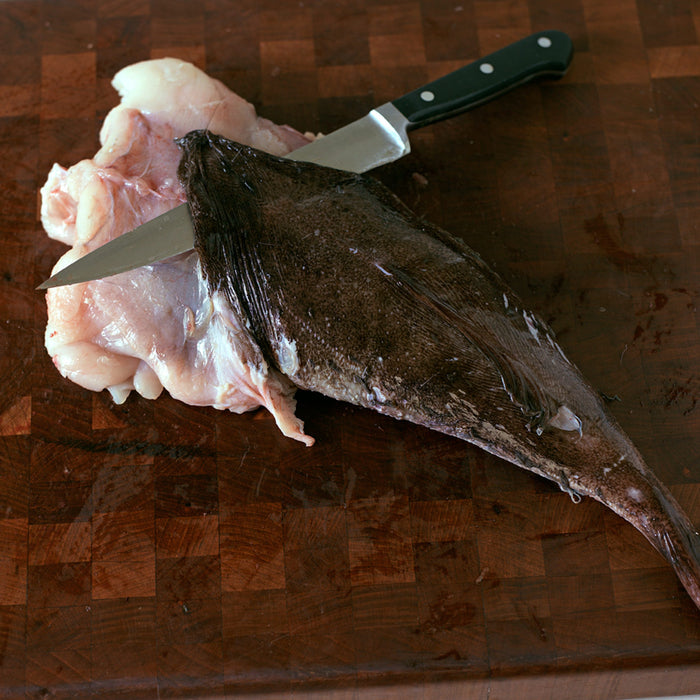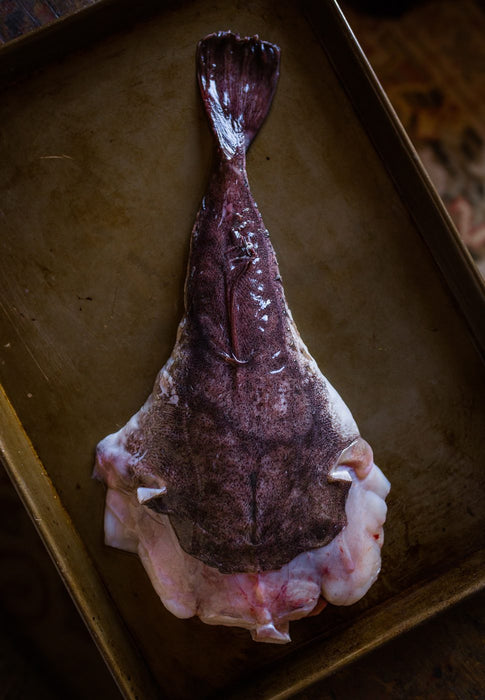ONLY A FISH WITH A FACE like this could have earned a name as peculiar as Monkfish. Bellyfish, goosefish, allmouth, bellows fish, frogfish and Molly Gowan are also all regional identifiers. Found throughout the world, it prevails in the North Atlantic – and in our Gulf of Maine waters in particular. Its wide grin of sharp teeth makes it seem nightmarish in the display case, but once filleted its firm, slightly sweet white tail meat beckons comparison to lobster meat – hence its nickname the “poor man’s lobster.”
Monkfish are deep sea fish that lack scales, which is also known as the anglerfish, because of the fishing rod-shaped antennae atop its distinctively ugly head. The antennae are useful in luring a wide variety of smaller fish to prey upon. With such a generous oral passageway, codlings nearly 2 feet in length have been discovered in their bellies, which can hold an inventory of food nearly half its own weight.
The tail end of the monkfish is what is marketed – more often than not the head is removed right on the fishing vessel – but when landed whole, the head and bones can be boiled down to a delicious stock, proving that nothing goes to waste. Monkfish “cheeks” cut from its large head have recently become a notable favorite of many upscale restaurants. Monkfish livers are also utilized in a popular pate, known as foie gras de mer, and are available whole and fresh in the cold winter months.
The Monkfish tail (usually between 3-6 lbs. each; whole fish can be as large as 75 lbs but are usually closer to 10 to 20 lbs) has a number of layers of skin and a bluish-grey membrane surrounding it, and care should be taken to peel these off prior to preparing (if cooked the membrane will shrink and ruin the meat). It has a single bone in the tail and once cleaned of membrane will yield two nice fillets. Often the dressed tail is split open, or butterflied, and bound for the grill, but is quite excellent when sautéed, poached, baked or fried. Often used in chowders, the meat of the monk can be also cooked and put in salads as a substitute for the pricier lobster.
The peak fishing for monk is late fall to late spring, but they are available year-round. Browne Trading’s monkfish are harvested by our local Portland fleet. Monkfish is available wholesale and online as 4lb tail fillets.
Catch Region: Gulf of Maine
Seasonality: Year Round
Catch Method: Trawl, Gill Net
Yield (Fillet Percentage): 39%
Flavor Profile: Mild and Slightly Sweet
Texture Profile: Firm and Dense
Substitute:
- Red Snapper
- Turbot
- Lobster Meat




